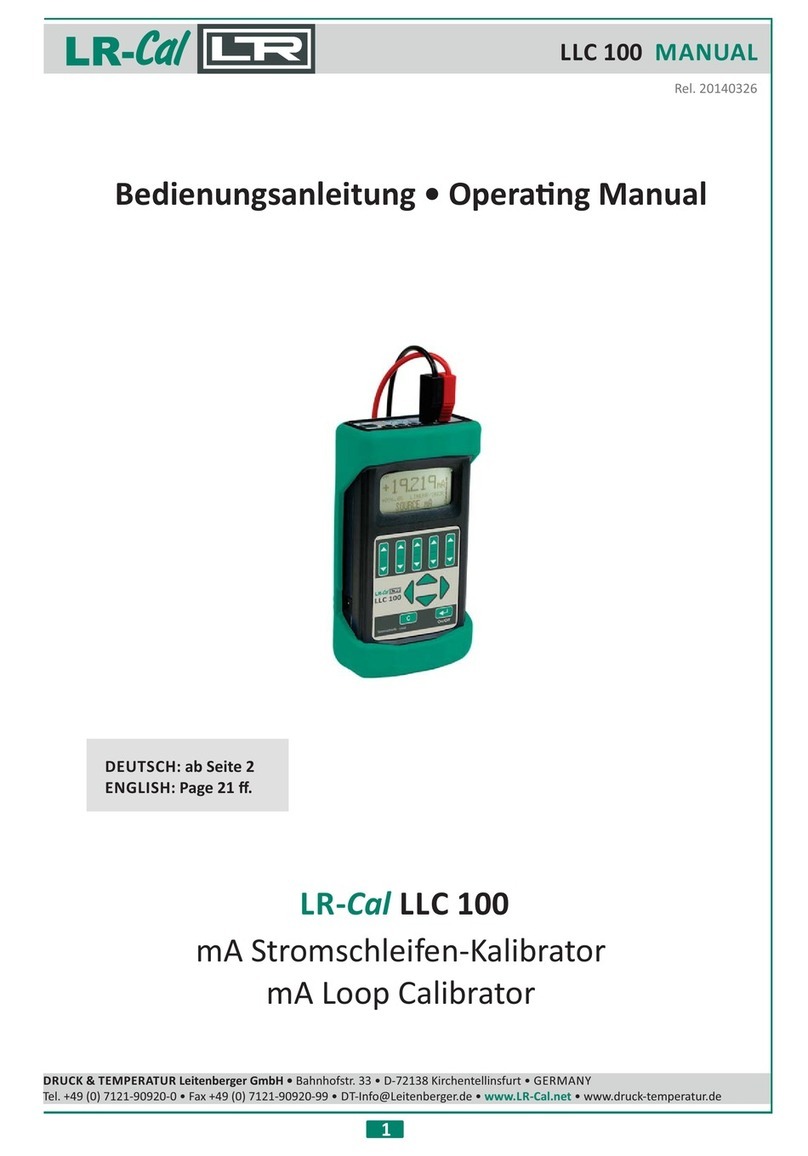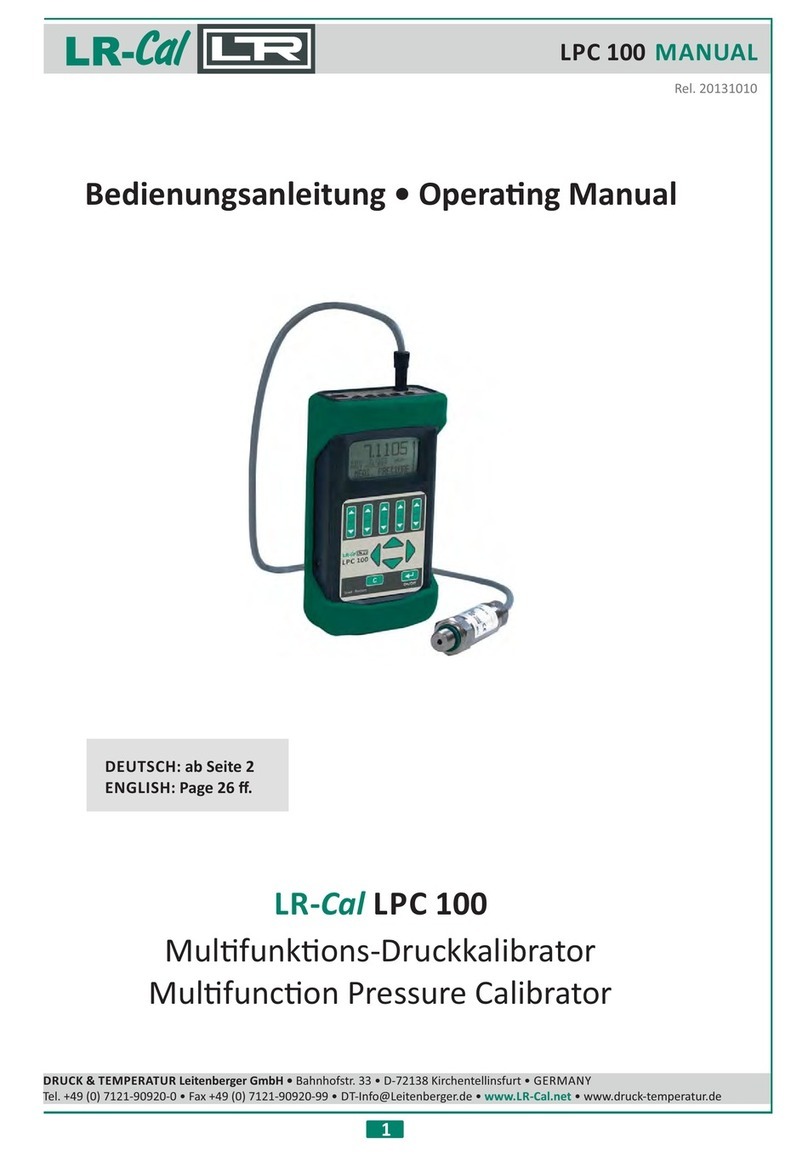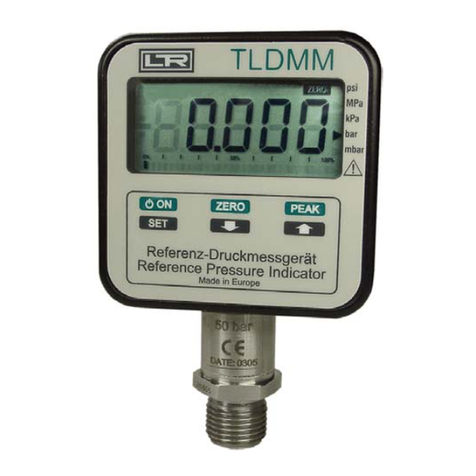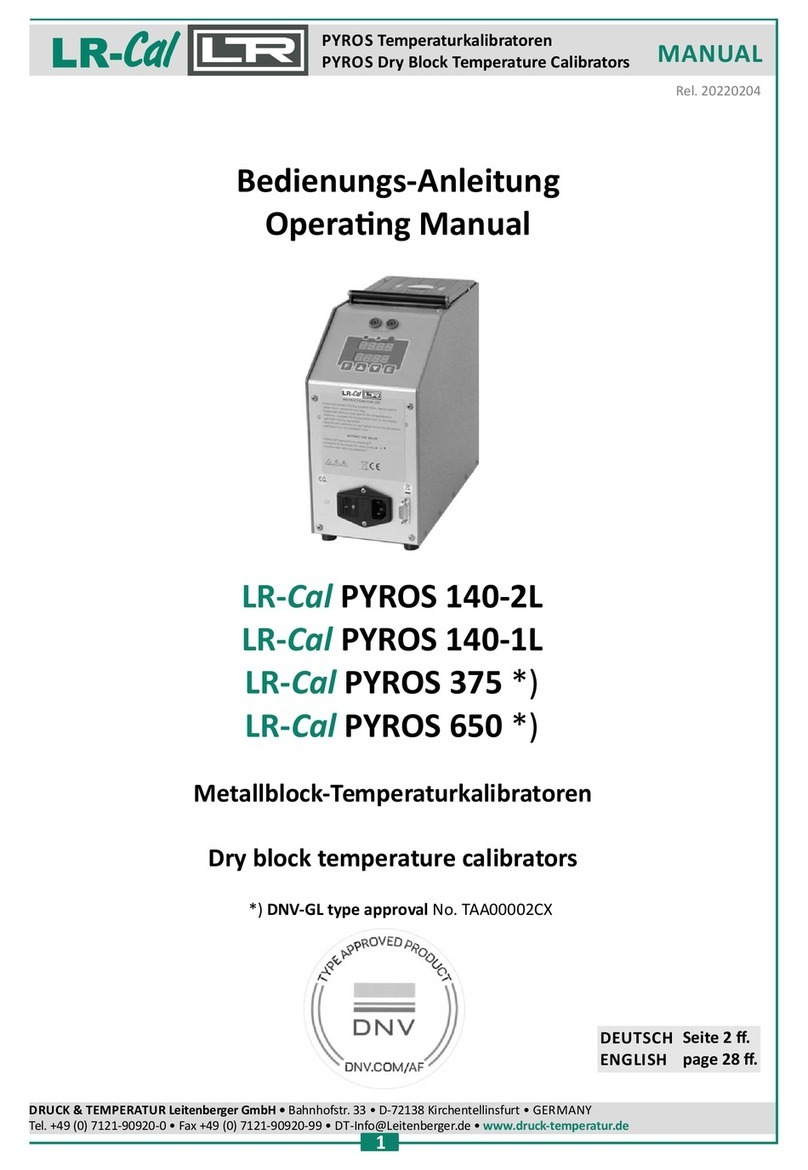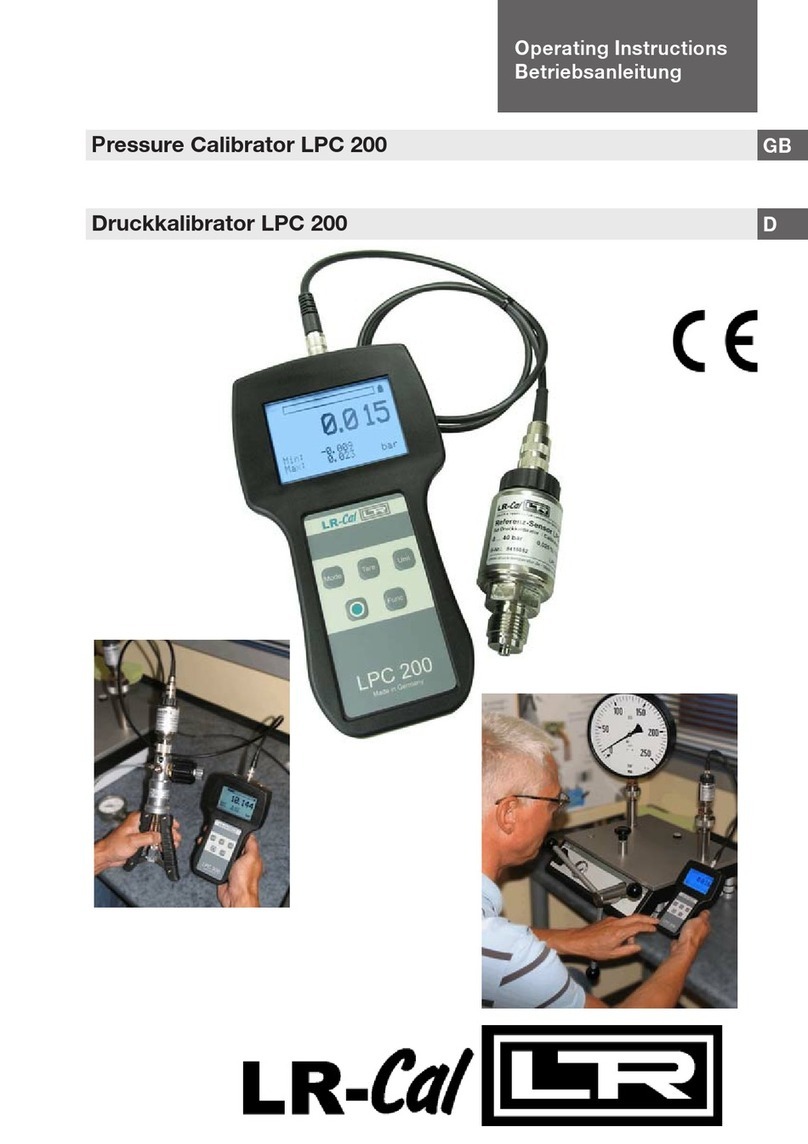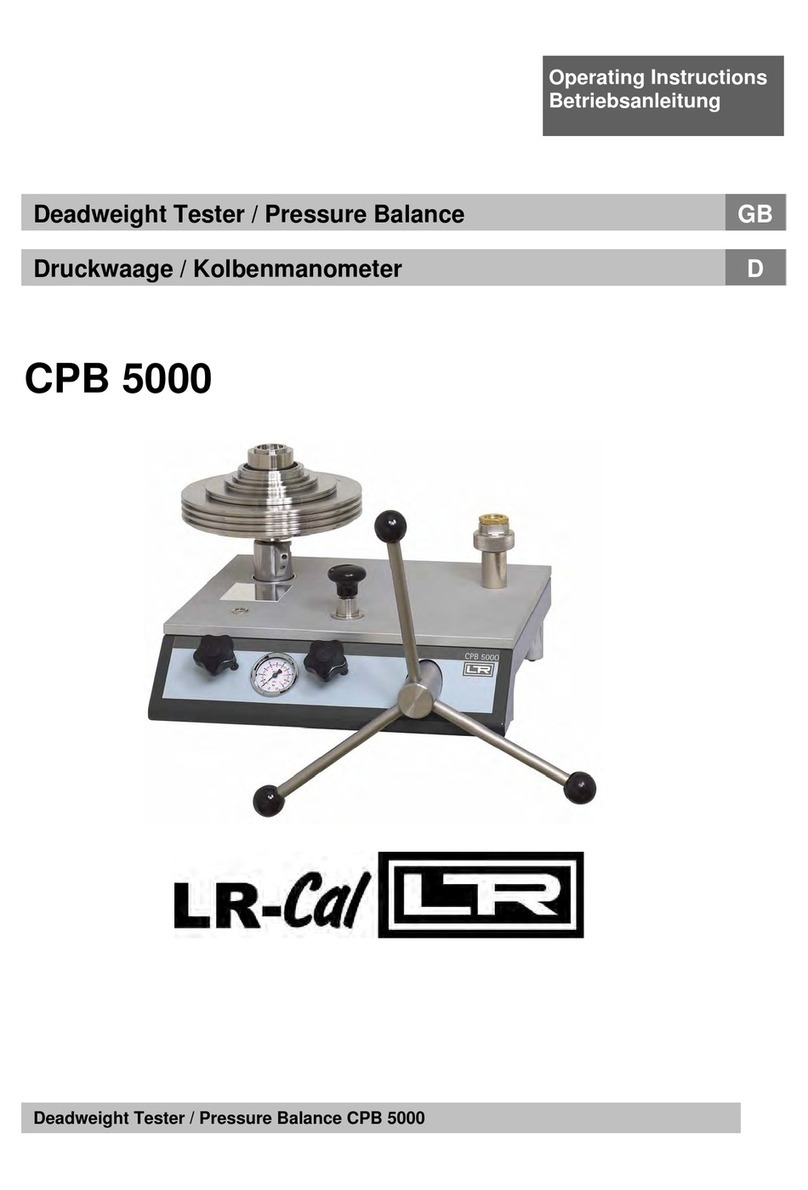
Deadweight Tester / Pressure Balance High-Pressure GB
LR-Cal CPB 5000-HP
LR-Cal Manual Deadweight Tester / Pressure Balance High Pressure 3
C
C
Co
o
on
n
nt
t
te
e
en
n
nt
t
ts
s
s
1. General ........................................................................................................................................... 4
1.1 General Instructions .................................................................................................................... 4
1.2 Safety Instructions .................................................................................................................... 5
2. Product Description ...................................................................................................................... 6
2.1 General Product Information ............................................................................................................ .6
2.2 Basic principle of the Pressure Balance........................................................................................... .7
2.3 Factors at work .................................................................................................................... 7
2.3.1 Local fluctuations in the gravity-value ................................................................................... 7
2.3.2 Temperature (Piston/Cylinder) ................................................................................................ 8
2.3.3 Ambient conditions .................................................................................................................. 8
2.3.4 How the cross-sectional surface responds to pressure ...................................................... 9
2.4 Arrangement of control elements ................................................................................................... .10
3. Commissioning and Operation .................................................................................................. 11
3.1 Preparation .................................................................................................................. 11
3.1.1 Setting up the Device ............................................................................................................. 11
3.1.2 Installing the piston cylinder system ................................................................................... 12
3.1.3 Connecting the test specimen .............................................................................................. 13
3.1.4 Venting the System ................................................................................................................ 14
3.2 Operation .................................................................................................................. 15
3.2.1 Weight Pieces ......................................................................................................................... 15
3.2.2 Approaching the pressure value (increasing pressure) ..................................................... 16
3.2.3 Pressure stable ....................................................................................................................... 17
3.2.4 Next pressure level ................................................................................................................. 17
3.2.5 Approaching the pressure value (decreasing pressure) .................................................... 18
3.3 Disassembly .................................................................................................................. 19
3.4 Transport .................................................................................................................. 19
4. Troubleshooting measures ........................................................................................................ 20
5. Maintenance and Care ................................................................................................................ 22
5.1 Cleaning .................................................................................................................. 22
5.1.1 Piston/Cylinder system .......................................................................................................... 22
5.1.2 Weight Set ............................................................................................................................... 22
5.2 Wear Parts .................................................................................................................. 22
5.3 Changing the Hydraulic Oil............................................................................................................. .23
5.3.1 Removing Hydraulic Oil ......................................................................................................... 23
5.3.2 Filling in of Hydraulic Oil ....................................................................................................... 23
5.3.3 Venting of the System (after Complete Filling only) ........................................................... 23
5.4 Recalibration .................................................................................................................. 24
6. Specifications .............................................................................................................................. 25
7. Tables of masses ......................................................................................................................... 27
8. Accessories .................................................................................................................................28












